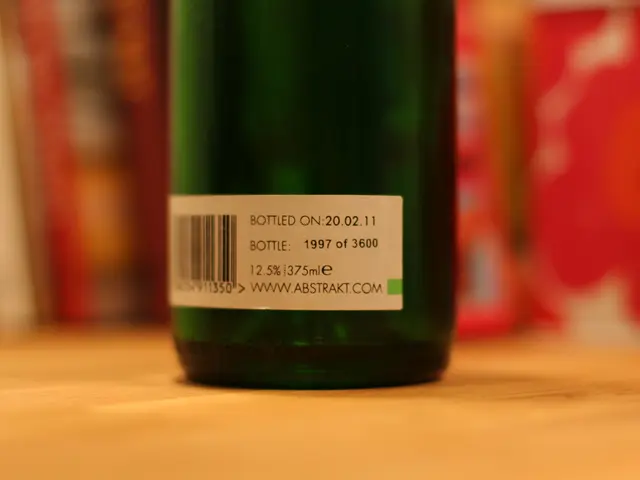Interpreting Statistical Significance through P Value
The p-value, a fundamental concept in statistics, was popularized by British statistician Ronald Fisher in 1925. Fisher introduced the p-value as a tool to measure the strength of evidence against a null hypothesis, and suggested a fixed threshold of 0.05 for statistical significance [1][3].
The roots of the p-value and statistical significance can be traced back to the 18th century, with Scottish physician John Arbuthnot using a form of probabilistic reasoning similar to p-values in 1710 [3]. This early work paved the way for the formalization of the concept of statistical significance, with mathematicians like Pierre-Simon Laplace and Siméon-Denis Poisson applying probabilities to assess unlikely events in various contexts.
In practice, the p-value represents the probability of obtaining a test statistic as extreme or more extreme than that observed, assuming the null hypothesis is true [4][5]. For example, in a t-test comparing two groups, a p-value below 0.05 suggests that such an extreme difference between group means would be rare if there were actually no difference [1].
The p-value plays a crucial role in helping researchers decide whether to reject the null hypothesis at a chosen significance level, commonly 0.05, thus providing a standardized way to assess evidence in experimental and observational studies across disciplines [1][3][5]. However, it is essential to consider the broader context when interpreting p-values, as misinterpretations can lead to incorrect conclusions.
One common misconception about the p-value is that it shows the probability of the null hypothesis being true. In fact, a low p-value indicates that the observed results are unlikely to have occurred by chance, making it more likely to reject the null hypothesis. However, a low p-value does not prove the magnitude or clinical meaning of the result. To interpret the p-value correctly, researchers need to consider factors such as effect size and related details.
Another misconception is that a small p-value equates to a large effect size or practical significance. While a low p-value suggests a statistically significant result, it does not necessarily imply a meaningful or clinically significant difference between the compared groups. A statistically significant result may not be a practically meaningful one, and the effect size should be considered along with the p-value to show practical significance.
It is also important to note that the p-value does not prove a cause-and-effect relationship. The p-value only shows if the data is different from what would be expected under the null hypothesis. Study design limitations, potential biases, and other explanations should be considered when interpreting p-values.
Proper study design, critical appraisal of findings, and replication are crucial in scientific research to avoid misinterpreting p-values. Misinterpretations can have serious consequences, as demonstrated by the hormone replacement therapy (HRT) study example, where misinterpretation of p-values led to wrong conclusions [2].
In conclusion, the p-value is a critical tool in statistics for assessing the significance of research results. However, it is essential to understand its limitations and interpret it correctly to avoid reaching incorrect conclusions. By considering the broader context, effect size, and other factors, researchers can make informed decisions based on their findings.
[1] Cumming, G., & Finch, S. (2013). Understanding the new statistics: Effect sizes, confidence intervals, and meta-analysis. Routledge.
[2] Ioannidis, J. P. A. (2005). Why most published research findings are false. PLoS medicine, 2(8), e124.
[3] Gelman, A., & Carlin, J. B. (2014). Bayesian data analysis. CRC press.
[4] Cohen, J. (1988). Statistical power analysis for the behavioral sciences (2nd ed.). Routledge.
[5] Kruschke, J. K. (2015). Doing psychology with R: A practical guide to data analysis and visualization in R. Routledge.
Researchers often use the p-value to assess the significance of their results, a concept introduced by Ronald Fisher in 1925 and traceable back to John Arbuthnot's work in the 18th century [1][3]. The media and health-and-wellness communities increasingly rely on the findings of statistical research, yet it's crucial that they understand the p-value's limitations [2]. Misconceptions about the p-value, such as it showing the probability of the null hypothesis being true, can lead to incorrect conclusions [5]. In reality, a low p-value indicates that the observed results are unlikely to have occurred by chance, making it more likely to reject the null hypothesis [4]. Researchers must also consider factors such as effect size, study design, and potential biases to correctly interpret the p-value and maintain scientific integrity [1][2][3]. Innovations in science and medical-conditions require rigorous statistical data and insights to establish the significance of new treatments and interventions [5]. By understanding and applying the p-value correctly, researchers can advance scientific knowledge and improve the health of individuals and populations.




